PRAFULLA MOHANTI: ANANDA
PILAR CORRIAS 51 Conduit Street, London W1S 2YT
4 April-10 May 2025
pilarcorrias.com
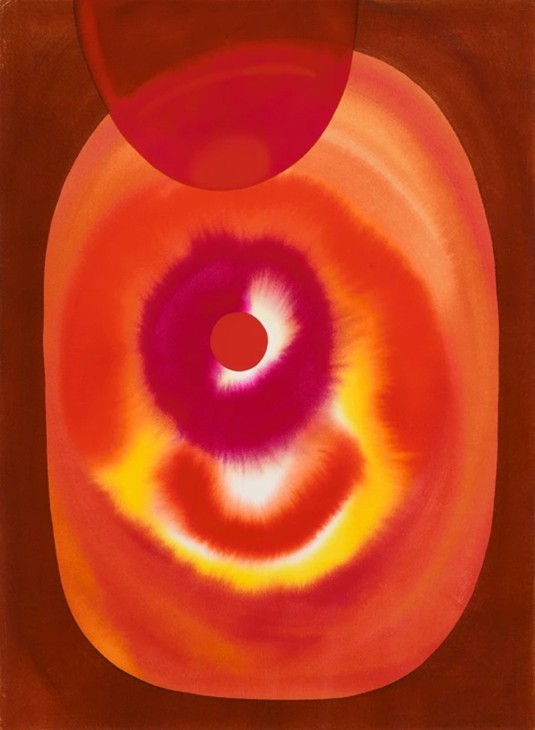
Prafulla Mohanti, Grishma, 1982, watercolour on paper. Courtesy and © Prafulla Mohanti
“My painting is rooted in my village culture, which is influenced by yoga and tantra.”
Prafulla Mohanti (quoted in Ocula, 2020)
The 91-year-old British-Indian artist and author studied architecture in Mumbai, came to London, experienced subtle racism and went to Leeds to practice urban planning before pursuing his career as an artist.
Despite his now international success, Mohanti maintains strong ties with his roots, spending five months annually in Nanpur, where he continues contributing to village development. Indeed, the vivid circular formations that recur in his paintings are connected with his village childhood. He was often called upon to draw near-perfect circles on mud floors for special occasions. They present the Hindu trinity of Brahma, Vishnu, and Maheshwar. No two paintings are alike. Colour suggests light and energy emanating from the centre of his compositions, evoking the calmness that he feels while painting: “As I worked with colours and forms on large surfaces I felt free and relaxed.”
AILEEN MURPHY: CRACKERS FOR LORELEI
AMANDA WILKINSON 1st Floor, 47 Farringdon Road, London EC1M 3JB
26 February - 5 April 2025
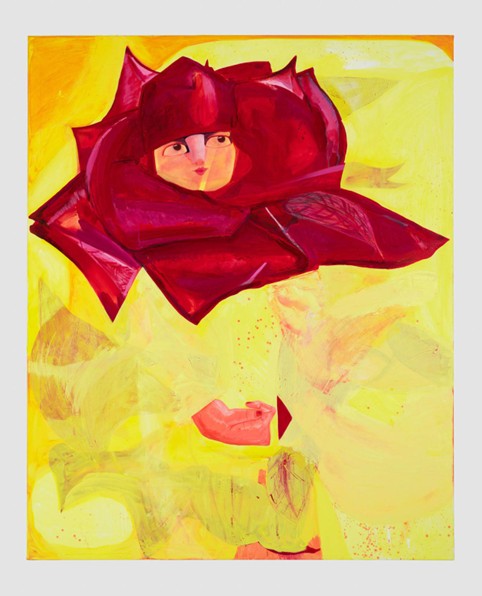
Aileen Murphy, Marigold, as cream, 2024, oil and cold wax on canvas, 160 x 130 cm. Courtesy Amanda Wilkinson Gallery, London. © Aileen Murphy
“It's important to me that the viewer can sit and take it all in and experience the show as one body of work, where all the paintings link up in some way.”
Aileen Murphy
Sligo-born Murphy graduated from the National College of Art and Design, Dublin (2007) and then studied at Städelschule Frankfurt, graduating in 2018. There she studied under Amy Sillman and Monika Baer and perhaps that influences Murphy’s interest in the painting as a handmade object which can be perceived from a multitude of varied perspectives. Like Sillman, she pushes the medium into unconventional and experimental territory. A car can grow legs; its wheels turn blue and liquid like spray paint. Perspective goes out the window and scribbles and marks feature on the surface where traces of erasures are visible. So, what was taken out and why is the viewer reminded of this editing? The figuration in her paintings is loose and its actions seemingly uncontrolled, sensual and humorous. Vivid painterly gestures suggest joy and stimulation; the surface consists of scribbles and marks, and expressive splashes mix with beautifully fluid details.
Staying at the same venue for the next exhibition in its calendar…
NEWLYN SOCIETY OF ARTISTS: LONGYA
Tremenheere Gallery, Tremenheere Sculpture Gardens, Nr Gulval, Penzance, TR20 8YL
29 March - 21st April 2025
Dr. Matt Retallick is the guest curator for the spring show LONGYA - EXPLORING AN UNCOMMON PLACE at Tremenheere Sculpture Gardens. Matt grew up in Cornwall but now lives in London. He is a Lecturer of Art History and Curating at Manchester School of Art. His close connection to Cornwall underlies the theme he has posed for NSA members to explore in this exhibition:
Longya is the Cornish word for ‘belong’. Cornwall is a place of strong and unique identity. Whether born of its soil, naturalised to call it home, or deeply connected to the area from elsewhere, the parameters of attachment are under constant debate. What is it to be an artist working in Cornwall today, or one whose work is inspired by the region? This exhibition explores the nuanced affinities that connect artists with this uncommon place.
OISÍN BYRNE
9 April - 1 June 2025
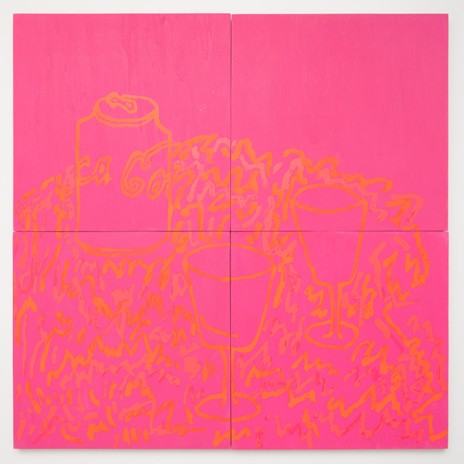
Oisín Byrne, Having a Coke with You, 2022, gesso and acrylic on board, 1000 x 1000 mm. © Oisín Byrne
“In the art room at school I was comfortable and safe; at NCAD, with creative people in the middle of a city, I felt like I had found a home. Art has always been my comfort.”
Oisín Byrne talking to Sarah McDonnell, The Gloss.
Byrne works in various media, especially drawing, origami and bold structures. He often works in collaboration with professionals in other fields, including his partner, fashion designer Jasper Conran. But he also paints, writes, makes films and sings. Language is at the core of his practice, and notebooks are the starting point for each new series, such as Volumes, which is a key part of this exhibition.
The painting Having a Coke with You (2022) is made in reference to Frank O’Hara’s poem with the same title. The warm glow of this painting reflects the colours of a self-portrait. In the exhibition, there is one of these: Byrne’s face peering out from the brightly painted marks that delineate his features. His work considers how the self can be expressed or contained in the many layers that make up a person.
TIM STONER: NEGATIVE SPACE
PACE 5 Hanover Square, London W1S 1HQ
5 Mar-12 Apr 2025
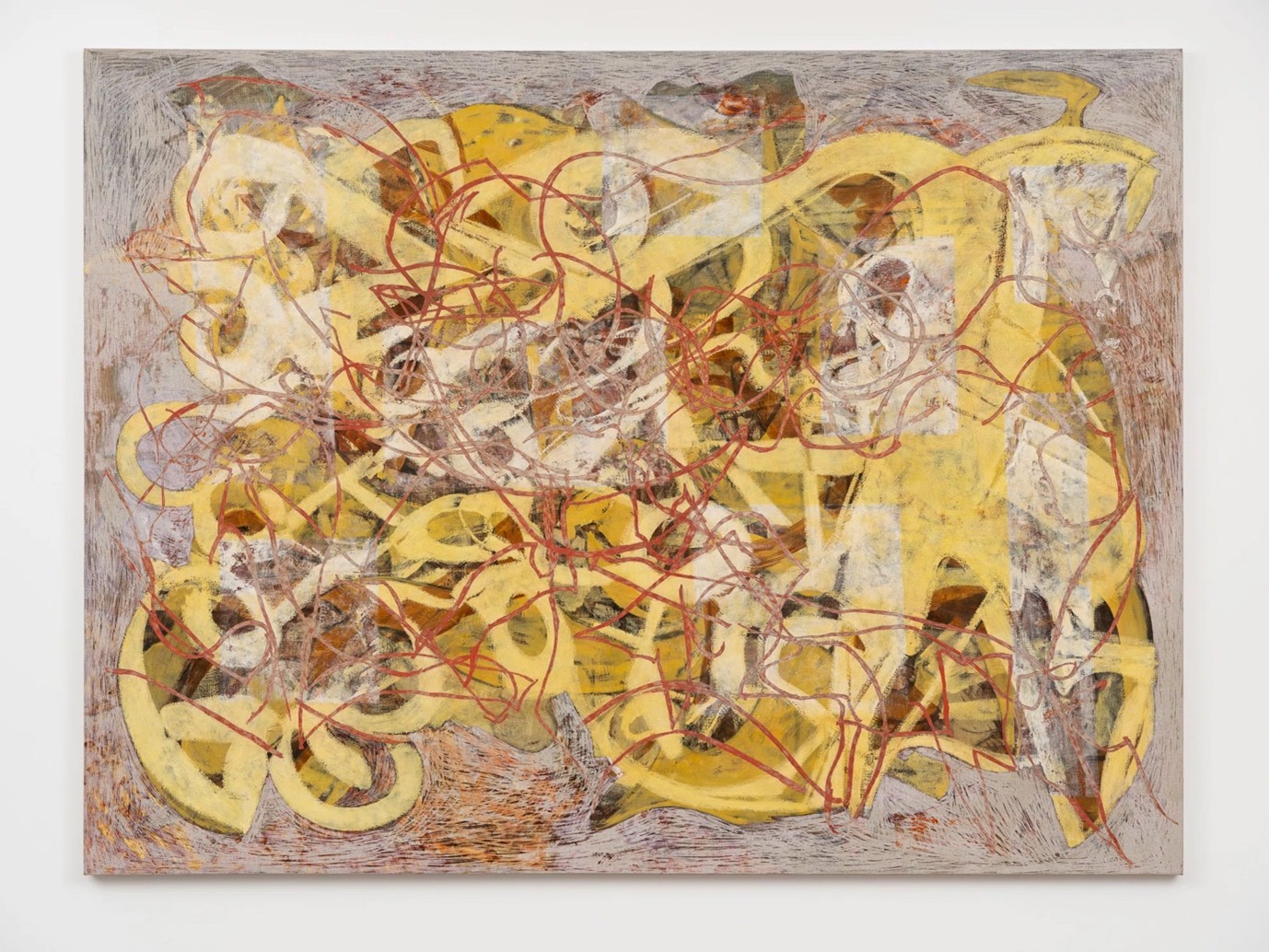
Tim Stoner, Cave, 2020-2025, oil and gouache on linen, 205.5 cm × 274 cm. Courtesy PACE. © Tim Stoner
"The subject of Stoner's work is light," writes The Guardian’s art critic, Adrian Searle, "and how painting both creates an illusory space and destroys it with its flatness." Working from photographs, the artist picks out his costumed, faceless figures against white in a monochrome graphic style reminiscent of woodcuts or comic-books. In recent years, Stoner's style has moved towards abstraction, derived from landscape. He thinks of his paintings as palimpsests, with scenes described as much by the removal and erasure of painting as by adding fresh medium. The finished works contain compressed layers of painting that resist a singular reading. Earlier forms and gestures are still visible through subsequent layers. One idea he examines is the layering and removal involved in the meticulous techniques of restoring of Old Masters, and whether meaning is lost in the process.
1980s New York graffiti and Persian calligraphy also interest Stoner as sources, and the intersection between ancient and contemporary. His methods are unconventional, such as submerging canvases in swimming pools or pouring chemicals over them before applying scalpels, sanding discs, and palette knives to distress the surfaces. These are acts of erasure, with the result that paintings seem to oscillate between unfinished starting points and completed compositions.
NEWLYN SCHOOL OF ART PROFESSIONAL LANDSCAPE: MICRO EXHIBITION
Chapel House, Chapel Sreet, Penzance, TR18 4AQ
19 January - 8 May 2025
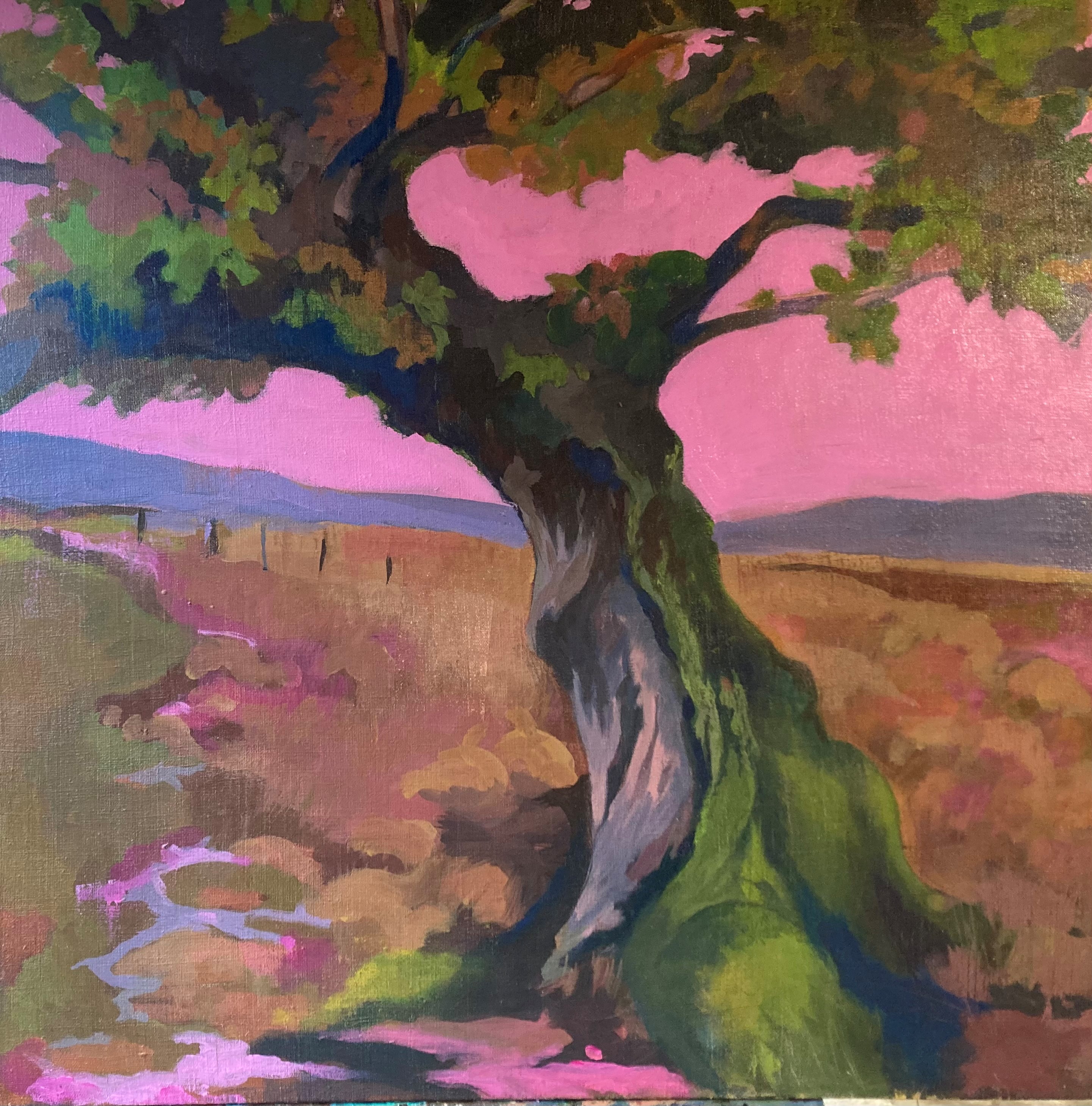
Sue Harragin, Dartmoor Oak Tree, 2024
Newlyn School of Art Professional Landscape Students are presenting a selection of their work at Chapel House until the 8th of May. This is the first of of three Professional Landscape exhibitions this year.
PER KIRKEBY: NATURES MORTES
MICHAEL WERNER GALLERY 22 Upper Brook Street, London W1K 7PZ
7 February -5 April 2025
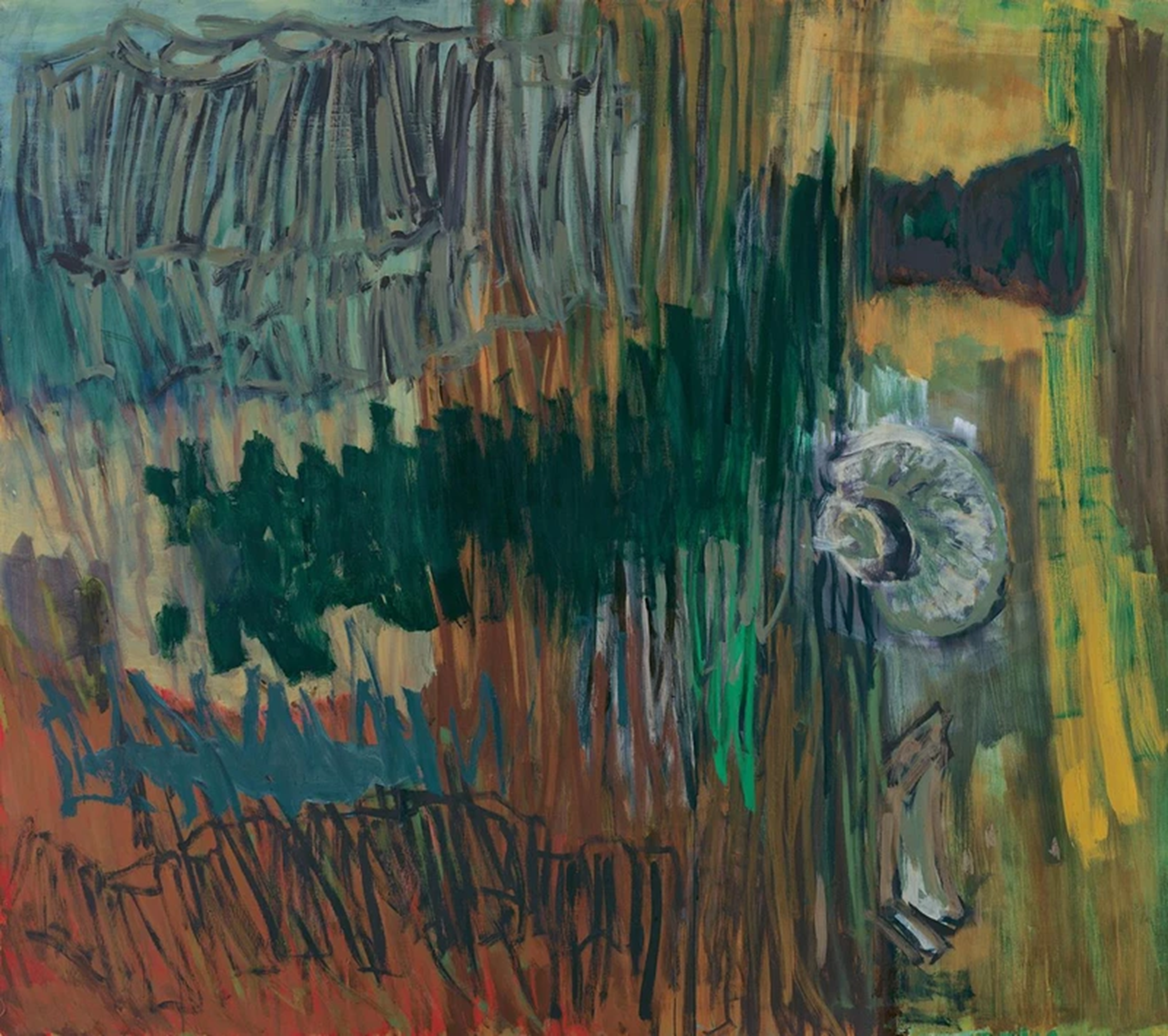
Per Kirkeby, Untitled, 2006, Tempera on canvas. Courtesy Michael Werner Gallery. © Per Kirkeby Estate
"All of us are forced to think about life and death," Kirkeby once said, "and my paintings are about that. It’s not that I point my finger and say, 'Look at that cross there — that is probably about death.' But, in a complicated way, it is." Per Kirkeby
In 1962, Danish artist Per Kirkeby gave up his academic career as a field geologist and enrolled at the newly founded Experimental Art School in Copenhagen. The avant-garde ‘Ex-School’, as it was known, was a focal point for young people keen to engage with experimentation and investigate new technologies. The institution’s programme was influenced by the inter-disciplinary Fluxus movement, which encouraged a playful and open-minded approach to art-making. From those seeds sprung a multi-talented figure. As well as paintings, Kirkeby made brick-built sculptures, which he referred to as "buildings without purpose". Quite unlike his expressive, gestural paintings, they were rectilinear and austere, rather like the Lutheran aesthetic he grew up in.
His expeditions to Greenland were formative, and Kirkeby transferred his fascination for geology into layering colour in his painting. The Nature Mortes show this, connecting natural motifs from nature in his painting with psychological states and experiences gathered on his expeditions and forays into nature.
PLACE REVISITED
MODERN ART; HELMET ROW 4-8 Helmet Row, London EC1V 3QJ
28 February - 5 April 2025
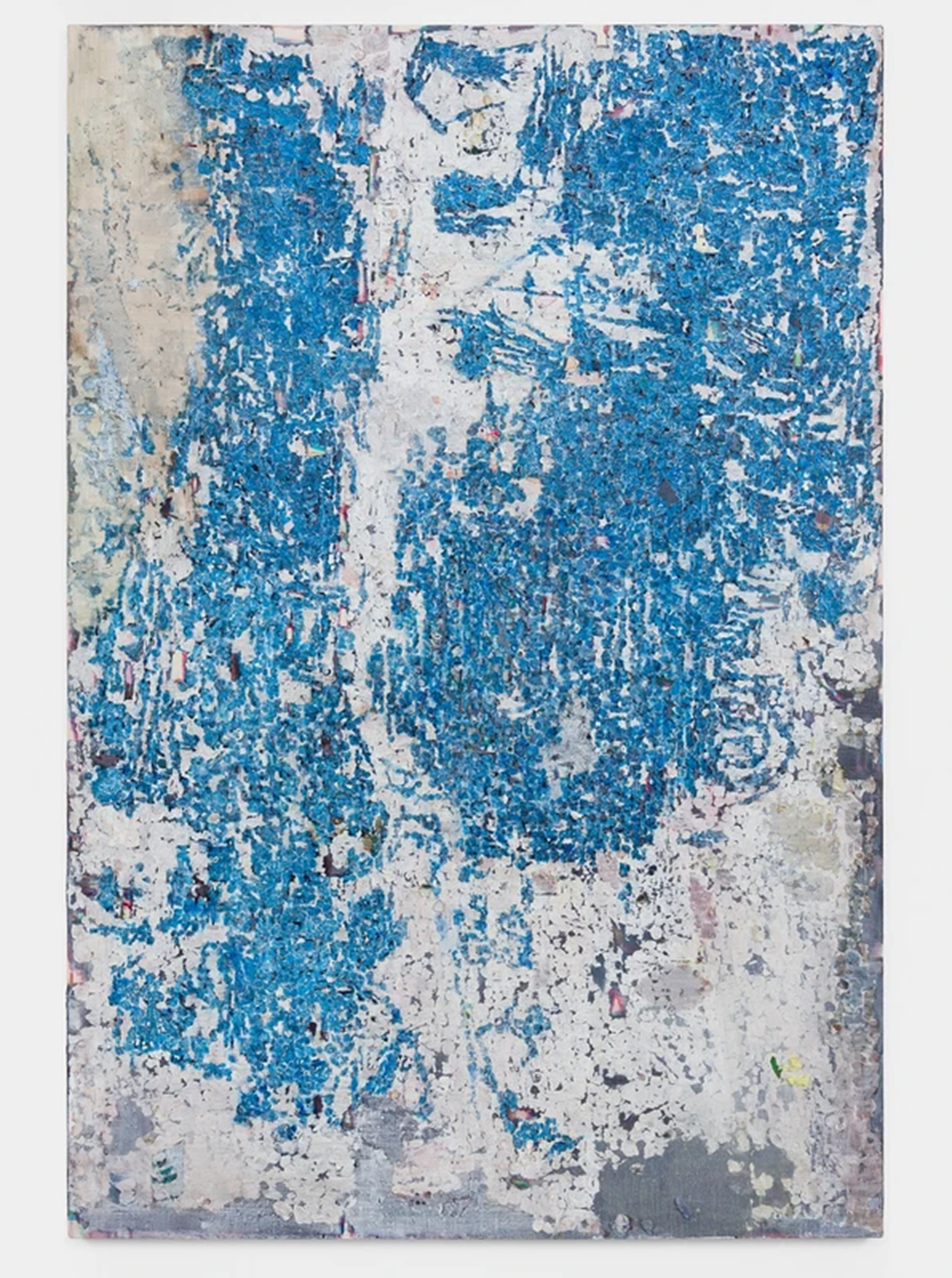
Masanori Tomita, Occupy, 2025
This group exhibition with five painters features presiding genius Prunella Clough, widely regarded as one of the most singular and significant British artists of the modern post-war period.
Also included in the show is Richard Aldrich, an artist deeply aware of the historical precedents of abstract painting. Within that context Aldrich revels in the possibilities of painting, using its fundamental elements — canvas, stretcher bars, and paint — to examine the medium. For instance, he might cut away the cloth of his painting to review the support structure it is stretched over. Keeping the medium vital, with an anti-heroic style and off-kilter composition is part of his strategy. Aldrich's work appears impermanent, aligning with the 'casualist' approach of other figures like Mary Heilmann and Raoul de Keyser. His work is intentionally awkward, physically fragile and unstable, and rejects the display of conventional skills.
Another artist in the show is Masanori Tomita, with abstract paintings which consist of densely-layered surfaces and opulent accretions of imagery. Tomita’s work is intimately connected to the intense materiality of Japanese postwar art and Manga. Crafted with resin, oil, and ink, the surfaces have a textured and coruscating quality, but with undertones of influences of European artists such as Gustave Moreau and Alberto Burri. Completing the line-up are Anh Trần and Terry Winters.
THEASTER GATES: 1965: MALCOLM IN WINTER: A TRANSLATION EXERCISE
WHITE CUBE BERMONDSEY 144-152 Bermondsey Street, London SE1 3TQ
7 February - 6 April 2025
whitecube.com
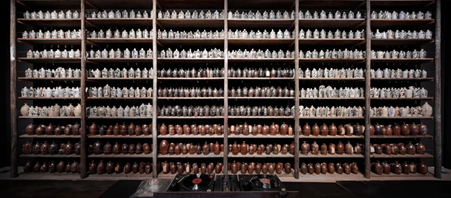
Image courtesy Theaster Gates Studio © Theaster Gates
Gates operates on the conviction that everyday objects hold deep significance, carrying a sort of memory of the experiences they have undergone. So discarded materials contain collective memories that Gates sees as the catalyst for a political and aesthetic reflection and social activism. Fire hoses used against demonstrators during the US Civil Rights Movement in the 1960s, or gym floors from dozens of high schools that have been closed and fallen into dereliction might unlock thoughts about the economic and social policies that lie behind them, how they were used or made redundant.
At his Whitechapel Art Gallery show in 2022, Gates worked with clay in order to draw out awareness of the material’s historical significance. Bringing together research, ideas, process and production, the artist’s method explores craft, labour, performance and racial identity. This show is a chance to become acquainted with one of the most influential artists of the moment.
RICHARD WRIGHT
CAMDEN ART CENTRE Arkwright Road, London NW3 6DG
16 April - 22 June 2025
camdenartcentre.org
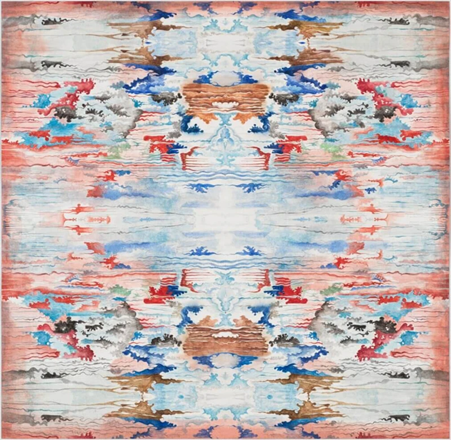
Richard Wright, No title, 2017, watercolour on paper © Richard Wright
2009 Turner prize-winner Wright thinks about his painting in terms of the architecture of space, its features and volume. He is best known for work applied straight to walls - a contemporary take on the ancient practice of mural painting. But there is an emotional aspect, too. Ideas are generated and first explored on paper on the floor, then go through stages of folding and cutting up and photocopying, adding and extending – what Wright describes as a 'very primitive method'. He then transfers the drawing by piercing the paper with holes and rubbing chalk through them so that an outline appears on the wall. It’s a technique that Holbein used in the sixteenth century, and Renaissance masters used before him. Most of Wright's work is destroyed after exhibitions.
The artworks that emerge are rooted in history with shades of William Blake, or of medieval manuscript illumination. The result is large-scale and abstract but not intimidating, as some graffiti or street art can be. Instead it is typically thoughtful and suggestive, triggering the imagination. What’s more, it’s beautiful. This show is, surprisingly, Wright’s first big outing in a public venue in London. It includes objects in glass and other materials, and smaller pieces in watercolour that have a different feel to his big installations. Wright, now 64, was born in London and moved to Scotland when he was young. He lives in Glasgow and was one of the artists who made the city so interesting for visual art in the 1980s and 90s. He’s also a guitarist with Scottish rock group Correcto.